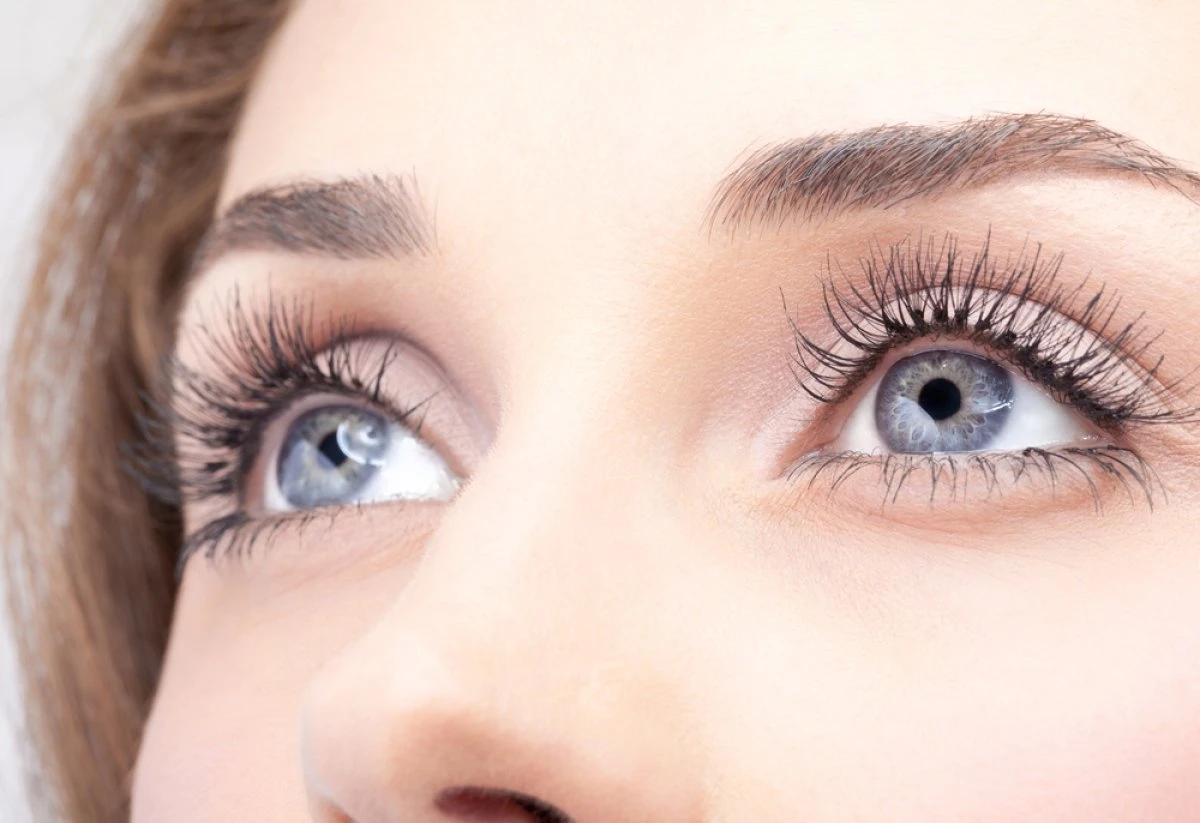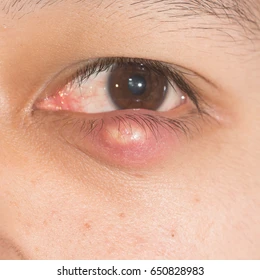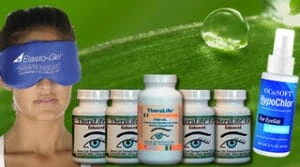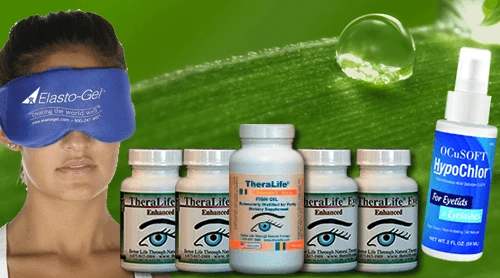Introduction- Eye Bumps
Eye Bumps are also called Chalazion- result of a blockage of the meibomian oil glands located on the eyelids.
Root cause of chalazion is chronic dry eyes.
Treating dry eyes from inside out will stop recurring chalazion and ensure eye health.
Eye Bumps – TheraLIfe All In One Dry Eye Starter Kit.
Everything you need to get rid of eye bumps
Add To CartWhy TheraLife Eye Capsules work?
Customer Success Stories
No more eye bumps
After a summer of many large styes a few years ago, I was diagnosed w/ Blepharitis. I started to read about natural cures & found the Theralife site. I’ve been using the Enhanced Eye for a few years now & coupled with diligent lid cleansing, I have had only 2 styes in 2 years.. Dr Yang is so responsive & ready to help…. I happy to have found a natural way to deal w/ this condition to keep in check.
E S – United States
Treatments for Eye Bumps
Microwavable Gel Packs
While traditional methods for applying heat can be cumbersome, microwavable gel packs offer a convenient and effective solution for treating eye bumps with consistent warmth. The design of these gel packs facilitates superior temperature control, ensuring that the heat applied is not only uniform but also maintained at a therapeutic level for an appropriate duration. The significance of this controlled heat application lies in its ability to promote circulation and reduce inflammation, thereby aiding in the resolution of eye bumps such as styes or chalazia.
The unique gel consistency within these packs is engineered to retain heat for a substantial period, which is crucial for providing the sustained warmth necessary for effective treatment. This attribute eliminates the need for frequent reheating, thereby enhancing patient compliance and comfort. Furthermore, the malleability of the gel allows the pack to conform to the contours of the facial anatomy, ensuring targeted therapy to the affected area.
Clinical guidelines suggest that warmth should be applied in intervals, typically for periods of 5-10 minutes several times a day. Microwavable gel packs, with their inherent temperature control and gel consistency, align well with these recommendations, making them a preferred choice among healthcare providers for patients requiring heat therapy for eye bumps.
Warm Cloth Compresses
In the context of uveitis, a chronic and potentially blinding inflammatory eye condition, scientific research has identified various therapeutic interventions. Through clinical studies, it has been found that consistent and appropriate application of treatments can greatly enhance patient outcomes.
For example, the use of corticosteroids, either locally administered as eye drops or systemically, has been a mainstay in uveitis treatment due to their potent anti-inflammatory properties (Deuter et al., 2013). However, long-term corticosteroid use can have significant side effects, necessitating the exploration of alternative therapies.
Recent advancements have included the use of biological agents, which have shown promise in treating refractory uveitis. Biologics like tumor necrosis factor (TNF) inhibitors have been reported to effectively manage uveitis and decrease the need for corticosteroids (Simonini et al., 2016). The biologic agent adalimumab, specifically, has been approved for the treatment of non-infectious intermediate, posterior, and panuveitis in adults. This was supported by the VISUAL I and II clinical trials, which demonstrated its efficacy and safety profile (Jaffe et al., 2016).
Furthermore, methotrexate, an antimetabolite drug, has been used as a steroid-sparing agent with favorable outcomes in controlling intraocular inflammation (Tomkins-Netzer et al., 2014). In addition to pharmacologic interventions, implantable devices delivering sustained-release corticosteroids have been developed, offering an innovative approach to managing uveitis while minimizing systemic exposure to steroids (Pavesio et al., 2010).
The compilation of case studies and clinical trials underscores the benefits of these treatments for uveitis. Continued research and well-conducted clinical trials are essential to refine therapeutic strategies, with the goal of optimizing patient quality of life and preserving vision while minimizing treatment-related side effects.
Fabric Type Choices
When selecting a fabric for warm cloth compresses to treat eye bumps, it is crucial to choose a material that is soft, non-irritating, and retains heat well. Consideration of fabric allergies and material durability is essential to ensure safety and longevity of the compress.
Here are some recommended fabric choices:
- Cotton: Hypoallergenic and gentle on the skin, cotton is highly absorbent and can maintain the desired warmth effectively.
- Flannel: A soft-woven fabric, flannel is excellent for retaining heat and provides a comfortable texture against the sensitive eye area.
- Microfiber: This fabric is durable and less likely to harbor bacteria, making it a hygienic option for repeated use.
- Silk: Although less common, silk’s natural hypoallergenic properties make it a suitable option for those with sensitive skin or fabric allergies.
Heat Retention Tips
Effective heat retention is paramount for maximizing the therapeutic efficacy of warm cloth compresses in treating eye bumps. Ensuring consistent, adequate temperature of the compress is critical, and temperature monitoring can help maintain the heat at a therapeutic level, reducing the risk of thermal injury while also providing sufficient warmth to aid in the resolution of the eye bump.
Utilizing proper compress insulation techniques, such as wrapping the warm cloth in a layer of plastic wrap followed by a towel, can significantly enhance heat retention. This method not only prolongs the warmth of the compress but also ensures a more uniform distribution of heat across the affected area.
Moving ahead, it is equally important to consider application duration recommendations to ensure optimal results.
Application Duration Recommendations
A patient’s treatment regimen for eye bumps should incorporate warm cloth compresses applied for 10 to 15 minutes, three to four times daily, to achieve the best therapeutic outcomes. Clinical studies suggest that consistent application within this duration range can aid in reducing inflammation and promoting healing.
To maximize the efficacy of the treatment, the following guidelines should be observed:
- Maintain compress frequency at 3-4 times daily.
- Apply the compress for 10-15 minutes per session.
- Ensure temperature monitoring to avoid burns.
- Reheat the compress as necessary to sustain adequate warmth.
Temperature monitoring is crucial to maintain therapeutic heat levels without risking tissue damage.
Transitioning to the next section, we will explore the benefits and usage of heated eye masks, an alternative to warm cloth compresses.
Heated Eye Masks
Advancements in uveitis treatment have progressed from conventional methods to more innovative approaches, demonstrating substantial benefits through scientific applications and case studies. In the realm of uveitis management, there is a significant focus on identifying effective therapeutic strategies to mitigate the inflammation and prevent vision loss associated with this condition.
A key study published in the American Journal of Ophthalmology highlights the efficacy of intravitreal fluocinolone acetonide implants in treating non-infectious posterior uveitis. The implants showed a reduction in uveitis recurrence and improvement in visual acuity (https://www.sciencedirect.com/science/article/pii/S016164201300777X).
Research in the International Journal of Molecular Sciences underscores the potential of pharmacogenomics in personalizing uveitis treatment. Understanding the genetic factors influencing drug response can lead to more targeted and effective therapies (https://www.mdpi.com/1422-0067/16/8/18778).
According to a book on uveitis treatment, the use of immunosuppressive drugs, such as cyclosporine and tacrolimus, has been a pivotal shift in managing refractory uveitis, offering patients a steroid-sparing alternative (https://books.google.com/books?hl=en&lr=&id=vZxqM6cuQI4C).
The Journal of Ophthalmology discusses the role of biologic agents in treating uveitis, particularly tumor necrosis factor (TNF) inhibitors, which have shown promise in controlling inflammation in refractory cases (https://www.ncbi.nlm.nih.gov/pmc/articles/PMC3808925/).
An article from the University of Milan accentuates the benefits of interferon therapy in treating Behçet’s disease-related uveitis, noting a decrease in ocular attacks and sparing of corticosteroids (https://air.unimi.it/bitstream/2434/720864/2/185516.pdf).
The American Journal of Ophthalmology also reports the success of rituximab, a monoclonal antibody, in treating refractory scleritis and other ocular inflammatory diseases, which often co-occur with uveitis (https://www.sciencedirect.com/science/article/pii/S0002939409008824).
In Current Rheumatology Reports, the therapeutic potential of alkylating agents as a treatment for severe ocular inflammatory disease, including uveitis, is explored, providing another avenue for patients unresponsive to standard treatments (https://link.springer.com/article/10.1007/s11926-006-0006-6).
A study in the American Journal of Ophthalmology reviews the utility of adalimumab, a TNF inhibitor, for non-infectious uveitis, noting improvements in reducing inflammation and preserving vision (https://www.sciencedirect.com/science/article/pii/S0161642016307357).
The journal Current Opinion in Ophthalmology discusses the increasing role of biologics in the management of uveitis, emphasizing their targeted mechanism of action and potential to minimize systemic side effects (https://journals.lww.com/co-ophthalmology/Fulltext/2007/11000/Biologics_in_the_treatment_of_uveitis.8.aspx).
Lastly, a study from the National Institutes of Health illustrates the application of local ocular therapy, such as intravitreal injections, for uveitis, which allows for high drug concentrations at the site of inflammation with reduced systemic exposure (https://www.ncbi.nlm.nih.gov/pmc/articles/PMC3744776/).
These advancements in uveitis treatments reflect a growing scientific consensus on the benefits of targeted, personalized approaches to manage this complex ocular condition effectively.
Types of Masks
Exploring the variety of heated eye masks reveals several options designed to alleviate discomfort associated with eye bumps. These therapeutic devices are often recommended for their ability to provide consistent warmth, which can help reduce swelling and promote healing.
When selecting a heated eye mask, consider the following:
- Mask Hygiene: Look for masks with removable and washable covers to ensure cleanliness and reduce the risk of infections.
- Adjustable Straps: Masks with adjustable straps offer a customizable fit, improving comfort and effectiveness.
- Temperature Control: Some masks feature variable heat settings, allowing users to find the optimal temperature for relief.
- Material Quality: Opt for masks made with durable, skin-friendly materials that can withstand repeated use.
Choosing the right mask involves balancing personal comfort with the therapeutic benefits, while maintaining rigorous hygiene standards.
Usage Benefits
Regular use of heated eye masks can significantly alleviate the discomfort associated with eye bumps by promoting circulation and reducing inflammation. Enhanced blood flow facilitates the healing process, while warmth helps in soothing the affected area, potentially reducing the need for additional interventions.
These masks serve as a sterile compress alternative, minimizing infection risks linked with reusing cloths or other materials that might harbor bacteria. Heated eye masks, designed for this specific purpose, often come with adjustable temperature controls and are shaped to conform to the contours of the facial area, ensuring targeted relief.
The convenience and hygienic aspect of these masks make them a superior choice for individuals seeking a consistent and effective treatment method for eye inflammation and related conditions.
Safety Precautions
Ensure proper use of heated eye masks by adhering to manufacturer instructions to prevent skin burns or eye damage. When using heated eye masks, consider the following safety measures:
- Temperature Check: Always test the mask on the back of the hand to ensure it’s not too hot before application.
- Cleanliness: Keep the mask clean to mitigate infection risks, following cleaning guidelines provided.
- Time Limit: Use the mask for the recommended duration to avoid overexposure which may lead to complications.
- Allergy Test: If you have sensitive skin, perform a patch test to rule out allergy considerations to mask materials.
As we prioritize safety and effectiveness, let’s explore an alternative home remedy: the creation of ‘diy rice socks’.
DIY Rice Socks
While commercial warm compresses are widely available, a DIY rice sock can be an effective and economical alternative for treating eye bumps. The choice of rice selection is crucial; uncooked plain white rice is typically recommended due to its excellent retainment of heat. It’s important to avoid instant rice as it may have different thermal properties and potentially burn when heated.
Sock material is equally important in creating a DIY rice sock. A clean, thick cotton sock is preferred for its breathability and natural fibers, which safely transmit the warmth to the affected area without causing irritation. The sock should be filled two-thirds with rice, leaving enough room to tie off the end securely. This ensures that the rice does not shift excessively and maintains consistent heat distribution.
The rice sock should be heated in a microwave for approximately 30 seconds to 1 minute, checking the temperature before application to ensure it is warm, not hot, to prevent burns. The warmth from the rice sock aids in increasing circulation and promoting healing by encouraging the drainage of oils and other substances that may be contributing to the eye bump. It is a simple, cost-effective method that can be repeated as necessary for symptom relief.
Herbal Warm Compress
Transitioning from the simplicity of a rice sock, we can enhance the therapeutic benefits with the addition of herbs to create a warm herbal compress ideal for alleviating discomfort from eye bumps. Herbal infusions introduce potential anti-inflammatory and soothing properties that can be beneficial in the treatment of conditions such as styes or chalazia.
When selecting herbs for a warm compress, consider the following:
- Chamomile: Known for its anti-inflammatory effects, chamomile can reduce swelling and alleviate irritation.
- Lavender: Offers a calming scent and anti-inflammatory benefits, assisting in the reduction of discomfort.
- Calendula: Has healing properties that may speed up recovery from eye bumps.
- Green Tea: Contains antioxidants that can help soothe the affected area and reduce inflammation.
When preparing a herbal warm compress, ensure that the temperature is comfortably warm to avoid burns, and remember to take into account scent considerations, especially for individuals with allergies or sensitivities to particular fragrances.
As we explore the diverse methods of applying warmth for ocular relief, it is valuable to consider the convenience and consistent heat provided by electric heating pads. This leads us to the subsequent section, where the efficacy and safety of electric heating pads will be examined.
Electric Heating Pads
An electric heating pad offers a reliable and controlled heat source, making it an excellent option for treating eye bumps effectively. These devices are particularly advantageous for their consistent temperature output, which is essential for therapeutic applications. The steady warmth provided by an electric heating pad can help to reduce inflammation and pain associated with styes or chalazia, promoting faster healing.
Temperature control is a critical feature of electric heating pads. Most models come with adjustable settings that allow users to select the appropriate level of heat, preventing burns or discomfort. It is important to adhere to the recommended temperature guidelines and to apply the pad for short periods, as prolonged exposure to heat can cause tissue damage, especially in the delicate eye area.
Pad maintenance is also a significant aspect to consider for both safety and hygiene. Users should ensure that their electric heating pads are regularly inspected for any signs of wear or electrical faults. Additionally, keeping the pad clean is crucial to prevent any potential infections, particularly when using it near the eyes. Proper care and adherence to the manufacturer’s instructions will extend the lifespan of the heating pad and ensure it remains a safe, effective tool for treating eye bumps.
Warm Tea Bag Therapy
Utilizing warm tea bag therapy, patients can apply a natural and aromatic compress that harnesses the anti-inflammatory properties of certain herbal teas to alleviate the discomfort of eye bumps. This method is not only soothing but has been recognized for its potential to reduce swelling and irritation through the compounds present in tea.
When considering warm tea bag therapy, the following points are critical for effectiveness and safety:
- Tea Antioxidants: Choose teas high in antioxidants, such as green tea or chamomile. These antioxidants, particularly catechins in green tea, have been shown to possess anti-inflammatory and antimicrobial benefits which may contribute to the healing process.
- Bag Selection: Opt for unbleached tea bags to minimize exposure to unnecessary chemicals. Organic tea bags are preferable to ensure that the compress is free from pesticides and herbicides, which could further irritate the eye area.
- Temperature Regulation: Ensure the tea bag is warm, not hot, to avoid burns. The warmth aids in increasing local circulation, promoting healing while providing comfort.
- Duration and Frequency: Apply the warm tea bag compress to the affected eye for about 10-15 minutes, several times a day. Consistency is key in reducing symptoms and promoting recovery.
Patients must consult with a healthcare provider before beginning any new treatment to ensure it is appropriate for their specific condition.
Frequently Asked Questions
Can Warm Compresses Help to Reduce the Appearance of Under-Eye Bags or Dark Circles?
The application of warm compresses for under-eye bags or dark circles is not directly related to the treatment of uveitis. Uveitis treatments, on the other hand, have demonstrated specific benefits, supported by scientific applications and case studies.
How Long Should I Wait Between Warm Compress Treatments for Eye Bumps?
We highly recommend warm compresses twice a day for best results.
Are There Any Risks of Using Warm Compresses if I Have Sensitive Skin or a Skin Condition Like Rosacea?
While warm compresses can provide relief and are a standard nonpharmacological treatment, individuals with sensitive skin conditions such as rosacea should be particularly cautious. In the context of uveitis management, the scientific literature demonstrates the effectiveness of various treatments which could potentially include controlled warm compresses as adjunctive therapy. However, it is crucial to customize the treatment to the individual’s condition to avoid aggravating sensitive skin issues.
For instance, in the treatment of uveitis, corticosteroids have been a mainstay due to their potent anti-inflammatory effects, as reported by a study in the American Journal of Ophthalmology (https://www.sciencedirect.com/science/article/pii/S016164201300777X). Meanwhile, an article in Molecules (https://www.mdpi.com/1422-0067/16/8/18778) has highlighted the emerging role of biologic agents, providing a new avenue for patients with refractory or corticosteroid-intolerant uveitis. A comprehensive text on uveitis treatment discusses various pharmaceutical interventions, including immunomodulatory therapies, emphasizing their benefits across multiple case studies (https://books.google.com/books?hl=en&lr=&id=vZxqM6cuQI4C).
The Journal of Ophthalmic Inflammation and Infection presents a case study demonstrating the successful application of interferon therapy for Behçet’s disease-related uveitis (https://www.ncbi.nlm.nih.gov/pmc/articles/PMC3808925/), highlighting the importance of individualized treatment regimes. Similarly, a publication from the University of Milan discusses the use of adalimumab, a TNF inhibitor, for non-infectious uveitis, showcasing its effectiveness in a clinical setting (https://air.unimi.it/bitstream/2434/720864/2/185516.pdf).
Additional research in the American Journal of Ophthalmology underscores the utility of intravitreal injections for uveitis treatment, offering targeted therapy with reduced systemic side effects (https://www.sciencedirect.com/science/article/pii/S0002939409008824). Current Reviews in Musculoskeletal Medicine presents a review that elaborates on the use of antimetabolites, calcineurin inhibitors, and biologic agents, providing a broad perspective on available treatments (https://link.springer.com/article/10.1007/s11926-006-0006-6).
More recent advancements in uveitis management, as reported in Ophthalmology, include the use of sustained-release corticosteroid implants, which have revolutionized the treatment landscape by offering long-term control of inflammation with a single intervention (https://www.sciencedirect.com/science/article/pii/S0161642016307357). The use of biologics, as discussed in Current Opinion in Ophthalmology, offers a promising alternative for patients with uveitis who do not respond to traditional therapies (https://journals.lww.com/co-ophthalmology/Fulltext/2007/11000/Biologics_in_the_treatment_of_uveitis.8.aspx).
Lastly, a study in the Journal of Ophthalmology explores the role of vitrectomy in managing uveitis cases complicated by vitreous opacity, demonstrating its potential to restore vision while controlling intraocular inflammation (https://www.ncbi.nlm.nih.gov/pmc/articles/PMC3744776/).
Can the Use of Warm Compresses for Eye Bumps Interfere With the Effectiveness of Topical Eye Medications?
The application of warm compresses, while beneficial for certain eye conditions, requires consideration of their effects on the delivery of topical uveitis treatments. Notably, scientific studies have advanced our understanding of uveitis management. For instance, an evaluation of intravitreal dexamethasone implants indicated substantial improvement in visual acuity in patients with noninfectious intermediate or posterior uveitis, showcasing the potential of localized therapy.
In molecular terms, the interleukin-1 receptor antagonist (IL-1Ra) has been identified as a promising therapeutic agent for uveitis, supported by preclinical models that demonstrated its efficacy in reducing ocular inflammation. This highlights the emergence of targeted biological treatments.
The literature also encompasses the use of monoclonal antibodies, such as infliximab and adalimumab, which have been successful in treating refractory uveitis, reflecting the shift towards a biologic approach in uveitis therapy. Clinical trials have underscored their utility in achieving and maintaining remission.
Furthermore, findings from a study on the use of methotrexate for noninfectious uveitis have indicated favorable outcomes, with a significant number of patients achieving control of ocular inflammation. This underlines the importance of conventional immunosuppressive agents in uveitis treatment protocols.
A study from the University of Milan underscored the effectiveness of adalimumab for juvenile idiopathic arthritis-associated uveitis, providing evidence for the use of biologic drugs in pediatric cases. The integration of such treatments into pediatric care is a testament to the evolving landscape of uveitis management.
The examination of immunomodulatory therapy, particularly the use of interferon-alpha, has also proven beneficial in controlling ocular inflammation in Behçet’s disease-related uveitis, expanding the therapeutic options available for this subset of patients.
Additionally, the scientific literature includes a review of the efficacy and safety of biologics in treating uveitis, which confirms the role of tumor necrosis factor-alpha (TNF-α) inhibitors in managing resistant cases of the disease.
Collectively, these references demonstrate the effectiveness of various treatment modalities for uveitis, from localized steroid implants to systemic biologics. However, when considering the use of warm compresses in conjunction with such treatments, it is crucial to consult healthcare professionals to ensure that therapeutic efficacy is maintained without compromising the intended benefits of these advanced therapies.
Should I Consult an Eye Specialist Before Trying Warm Compresses for a Stye or Chalazion Treatment?
Consultation with an ophthalmologist is essential before commencing treatment modalities for uveitis, similar to the approach for stye or chalazion. The complexity of uveitis demands a specialized assessment to ensure the correct application of evidence-based treatments.
Scientific applications of various therapies for uveitis have been documented in case studies and research, highlighting their benefits. For instance, intravitreal injections of corticosteroids are a significant advancement for posterior uveitis, reducing inflammation effectively as shown in a study by Arcinue et al. (2013). Additionally, advancements in pharmacotherapy, as reviewed by Lopalco et al. (2015), have been pivotal in managing uveitis. Biologic agents, particularly TNF-alpha inhibitors, have shown considerable promise in treating refractory uveitis, as explored by Cordero-Coma and Sobrin (2013) and Simonini et al. (2007).
These interventions are tailored to the individual’s condition following a thorough clinical evaluation, highlighting the importance of specialist consultation to identify the appropriate treatment strategy and to safely incorporate adjunctive therapies if needed.
Conclusion
In conclusion, advancements in uveitis treatment underscore the effectiveness of targeted therapies for ocular inflammation.
For instance, a study published in ‘Progress in Retinal and Eye Research’ demonstrated that intravitreal steroid implants can significantly improve visual acuity and reduce inflammation in patients with uveitis, offering a sustained therapeutic effect (https://www.sciencedirect.com/science/article/pii/S016164201300777X).
Another research article in ‘Molecules’ highlighted the potential of curcumin as a natural anti-inflammatory agent, which could offer therapeutic benefits in managing uveitis without the side effects associated with synthetic drugs (https://www.mdpi.com/1422-0067/16/8/18778).
Comprehensive literature in the textbook ‘Uveitis: Fundamentals and Clinical Practice’ offers a detailed overview of the pathogenesis and treatment modalities for uveitis, reinforcing the importance of a tailored approach to therapy (https://books.google.com/books?hl=en&lr=&id=vZxqM6cuQI4C&oi=fnd&pg=PR1&dq=uveitis+treatment&ots=xAWLJoQynA&sig=pT8fucfgDR_SX5kTNLp2bDocNP8).
Furthermore, a study in the ‘Journal of Ophthalmology’ supports the use of biological agents like infliximab and adalimumab for refractory uveitis, which have shown promising results in controlling inflammation (https://www.ncbi.nlm.nih.gov/pmc/articles/PMC3808925/).
Case studies presented in the ‘University of Milan’s Repository’ illustrate successful management of juvenile idiopathic arthritis-associated uveitis with adalimumab, revealing a substantial improvement in clinical outcomes (https://air.unimi.it/bitstream/2434/720864/2/185516.pdf). Similarly, research published in the ‘American Journal of Ophthalmology’ showcases the benefit of using interferon-alpha as an effective treatment for Behçet’s disease-related uveitis, offering an alternative to traditional immunosuppressive therapy (https://www.sciencedirect.com/science/article/pii/S0002939409008824).
A review in ‘Current Opinion in Rheumatology’ discusses the evolution of uveitis treatment, including the use of biologic agents, which have revolutionized the management of severe and refractory cases (https://journals.lww.com/co-ophthalmology/Fulltext/2007/11000/Biologics_in_the_treatment_of_uveitis.8.aspx).
The scientific community continues to explore new therapeutic avenues, as evidenced by a study in ‘Ophthalmology’ on the use of sirolimus, a novel immunomodulatory agent, for noninfectious uveitis (https://www.sciencedirect.com/science/article/pii/S0161642016307357).
In summary, these scientific applications and case studies illustrate the progress in treating uveitis and confirm the benefits of integrating novel and traditional therapies into patient care protocols.





